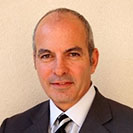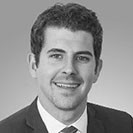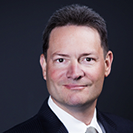The Critical Client Meetings Financial Advisors Are Missing
Sometime in the next several weeks, some of your clients will have one of the most consequential financial meetings of their lives—but it won’t be with you. In fact, you won’t even be in the room. That meeting will be with their tax professional, and they’ll be talking about how to dispose of low-basis assets, if they should refinance their home, or whether or not a Roth conversion makes sense.
Clients go to their tax pros for advice on just about anything and everything financial. They ask their tax pros for two reasons: they believe the tax professional is a serious and sober decision-maker and trust them to provide unbiased advice. Here’s a challenging question for you: why don’t they feel that way about you?
Wait, you may say, they do feel that way about me. If that’s the case, here’s an even more challenging question for you: why don’t you help your clients solve tax challenges with active portfolio management strategies and solve for risks with creative insurance products? You’re missing an opportunity to do more for your clients and more for your bottom line.
What High-Net-Worth Clients Truly Need: Tax, Risk, and Legacy Planning
Advisors who seek an elite level of income and practice value have a fundamental choice. One way is to override a team of advisors, each of whom has a large book of business. The other way is to build a boutique practice that serves the complex and diverse needs of fewer but wealthier families.
Consider what these two models could be. Practice one, with 1,000 clients with an average investable balance of $500,000, or 20 families with an average investable balance of $5 million. The first manages $50 million and has little choice but to offer cookie-cutter solutions, while the second manages $100 million and can spend dozens of hours with each client every year, building holistic, bespoke solutions and capturing nearly 100% of their total spend on financial services.
Both of these models have revenue streams based on AUM, but the second model can also capture at least a share of sophisticated planning and insurance revenues and may even earn fees on private equity and investment banking transactions.
There are many things that affect the valuation of a practice, but our guess would be that the second model is much more attractive to buyers, and would be likely to capture a multiple of the value of the first model.
The two models differ not only in size and scope of services but also because they attract different client demographics. Higher-net-worth clients need tax and risk advice and sometimes legacy planning services, while the more modest families do not. Most of the higher-net-worth clients will own or have owned a business, which tends to make them more well-educated about their options and more comfortable with making consequential decisions.
Turnkey Solutions for Multi-Family Offices with Financial Gravity
Sourcing these two different types of clients is another way that these models differ. The first model, filled with retirees, professionals, and employees, tends to get new prospects from client referrals. The second model is more likely to get referrals from lawyers and tax professionals with specialties in estate planning. The advisor will need to devote significant time to center-of-influence development.
Model one works well for entrepreneurs who enjoy building large enterprises with lots of employees. Model two works best for advisors who love to develop deep relationships and solve complex problems. The barriers to entry for the first model are relatively low, while building what amounts to a multi-family office can be a daunting challenge.
Fortunately, advisors who find the second model appealing now have an option that is low-cost and quick to implement: they can partner with a turnkey multi-family office charter company, like Financial Gravity. Financial Gravity sees an immense opportunity for advisors who democratize the multi-family office.
Financial Gravity offers advisors its unique Done-For-You support model, which seeks to offload all tactical and routine duties from the advisor while helping them find qualified prospects via agency-level targeted marketing services. Learn more in this short, 20-minute on-demand webinar.
One hundred years ago, MFS launched the first open-ended, actively managed mutual fund, and it was a revolution for the American family, who, for the first time, got access to professional management, diversification, and liquidity for low costs. That became a multi-trillion dollar industry. That very same process is underway now, as the mass affluent enjoy holistic, cross-disciplinary advice free from industry bias.




















